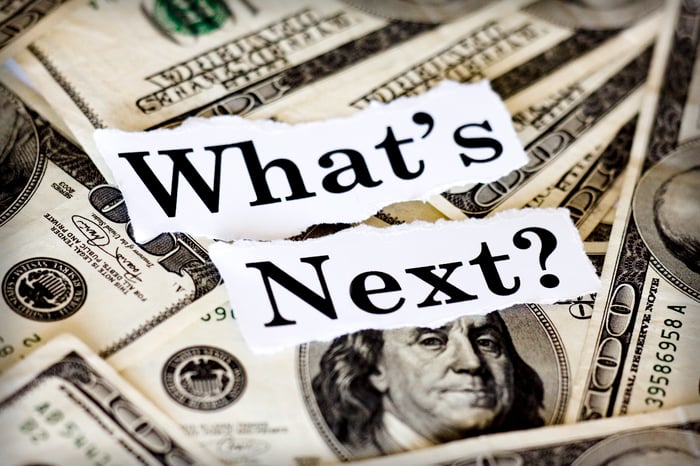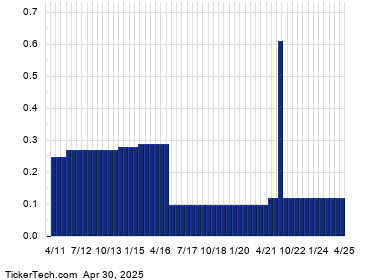Current Concentration Trends in the S&P 500 and Historical Context
Institutional investors at hedge funds or wealth management firms often excel at picking stocks. However, most individuals lack the time or resources to conduct thorough research before investing. This is why investing in an index fund that tracks the S&P 500 (SNPINDEX: ^GSPC) is usually a solid choice. It allows the average investor to embark on their financial journey and build wealth over time.
Investing in the S&P 500 provides diversification that is hard to achieve with just a few individual stocks, minimizing portfolio risk. This approach protects investors from downturns affecting specific sectors or businesses.
Where should you invest $1,000 today? Our analyst team has identified the 10 best stocks to consider right now. Continue »
Nevertheless, certain indexes can become over-concentrated due to a select group of stocks. Currently, this phenomenon is occurring in the S&P 500.
Next, we will examine the current concentration levels within the index. Then, we’ll explore historical trends related to rising concentration and discuss why past patterns may not repeat in today’s market.
Analyzing Current Trends in Stock Concentration
Goldman Sachs recently published a research report on concentration levels in the S&P 500 over the last century. The findings reveal that the influence of the top 10 stocks in the index, based on market capitalization, has reached an unprecedented concentration not seen since 1932.
This report highlights other years with similar high concentration levels: 1932, 1939, 1964, 1973, 2000, 2009, and 2020. By examining these periods, we can identify common factors.

Image source: Getty Images.
Review of Key Historical Events
Below, we summarize significant years from Goldman’s analysis along with noteworthy historical contexts:
- 1932 and 1939: These years frame the Great Depression. Markets were still recovering from the 1929 crash, marked by high unemployment and economic struggles. Although not concentrated in a few companies, sectors like infrastructure gained momentum due to New Deal policies. As World War II approached, manufacturing and defense industries experienced rising concentration levels.
- 1973: The 1970s witnessed multiple oil crises. In 1973, geopolitical tensions caused stagflation, driving investors toward energy stocks amid rising prices and shortages.
- 2000: During the dot-com boom, technology stocks soared, coaxing many investors toward this sector.
- 2009: The Great Recession, marked by the housing crisis and the failures of Lehman Brothers and Bear Stearns, prompted the Federal Reserve to lower interest rates. This led to heightened concentration in technology and financial sectors as the recovery began.
- 2020: Initially triggered by the COVID-19 pandemic, this year spurred a shift to a digital-first economy, boosting sectors such as e-commerce and technology.
The main takeaway is that significant events influence investor interest in particular industries. Investors often chase momentum in a select group of stocks or sectors during these periods.
Potential Market Outcomes and Current Distinctions
When megatrends or singular events trigger widespread interest in certain markets, economists often label it a bubble. Such bubbles can lead to stock market crashes, as seen with the dot-com bust and the Great Recession.
Currently, the most notable megatrend is artificial intelligence (AI). Over the past two years, many technology stocks surged due to optimistic projections about AI. While this behavior suggests a bubble may be forming, there are important distinctions this time.
Many of the stocks that initially increased in value have since corrected or returned to their historical averages. This indicates that some AI stocks were not solid growth opportunities but rather speculative plays.
Importantly, the S&P 500’s concentration isn’t limited to AI stocks. Among the top 10 companies in the index, eight are large-cap tech firms: Apple, Microsoft, Nvidia, Amazon, Alphabet, Meta Platforms, Tesla, and Broadcom. Although AI is a significant tailwind for these firms, they each offer a diverse array of products and services.
As capital markets evolve, understanding these dynamics is essential for investors navigating this landscape.
Economic Uncertainty Persists, Yet S&P 500 Companies Commit to AI
The S&P 500 has faced significant challenges in 2025, largely driven by economic uncertainty and evolving discussions surrounding President Donald Trump’s tariff policies. Despite this backdrop, companies in the index remain dedicated to investing in artificial intelligence (AI) infrastructure over the coming years. This commitment suggests that AI is not merely a trend but a fundamental shift recognized by leading corporations as crucial to their next phase of growth.
Valuations High But No Immediate Crash Expected
Currently, valuations for many S&P 500 stocks are near historic highs. However, it’s important to note that none have declined to a level that would suggest a potential market crash is imminent. The current concentration in megacap technology stocks indicates that a sustained market downturn or prolonged economic slowdown is unlikely.
Should You Invest $1,000 in the S&P 500 Index Now?
Before making any investment in the S&P 500 Index, consider the expert recommendations from analysts.
The analyst team at Motley Fool Stock Advisor has identified what they believe are the 10 best stocks for investors to consider now—where the S&P 500 Index did not make the list. These selected stocks could yield substantial returns in the years ahead.
Take note of previous successful inclusions, such as when Netflix made the list on December 17, 2004. An investment of $1,000 at that time would now be worth $598,818! Furthermore, Nvidia was recommended on April 15, 2005, where a similar investment would have grown to $666,416!
It’s interesting to consider that Stock Advisor has achieved an average total return of 872%, significantly outperforming the S&P 500’s 160% return. Those interested can access the latest top 10 list by joining the program.
Note on Disclosure
See the 10 stocks »
*Stock Advisor returns as of April 28, 2025.
Several members affiliated with the Motley Fool, including executives from prominent companies like Alphabet and Facebook, are part of its board of directors.
Disclosure: Adam Spatacco holds positions in companies including Alphabet, Amazon, and Tesla. The Motley Fool recommends various stocks, including Alphabet and Amazon, and has disclosed specific options positions related to Microsoft.
The opinions expressed here are those of the author and do not necessarily reflect Nasdaq, Inc.

